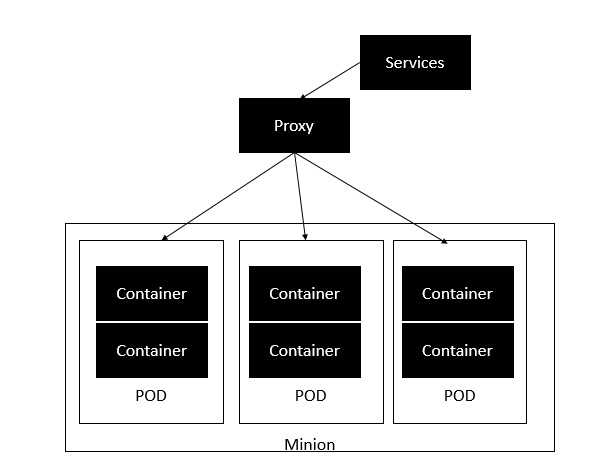
- Docker Tutorial
- Docker - Home
- Docker - Overview
- Docker - Installing on Linux
- Docker - Installation
- Docker - Hub
- Docker - Images
- Docker - Containers
- Docker - Registries
- Docker - Compose
- Docker - Working With Containers
- Docker - Architecture
- Docker - Layers
- Docker - Container & Hosts
- Docker - Configuration
- Docker - Containers & Shells
- Docker - Dockerfile
- Docker - Building Files
- Docker - Public Repositories
- Docker - Managing Ports
- Docker - Web Server
- Docker - Commands
- Docker - Container Linking
- Docker - Data Storage
- Docker - Networking
- Docker - Security
- Docker - Toolbox
- Docker - Cloud
- Docker - Logging
- Docker - Continuous Integration
- Docker - Kubernetes Architecture
- Docker - Working of Kubernetes
- Docker Setting Services
- Docker - Setting Node.js
- Docker - Setting MongoDB
- Docker - Setting NGINX
- Docker - Setting ASP.Net
- Docker Setting - Python
- Docker Setting - Java
- Docker Setting - Redis
- Docker Setting - Alpine
- Docker Setting - BusyBox
- Docker Useful Resources
- Docker - Quick Guide
- Docker - Useful Resources
- Docker - Discussion
Docker - Kubernetes Architecture
Kubernetes is an orchestration framework for Docker containers which helps expose containers as services to the outside world. For example, you can have two services − One service would contain nginx and mongoDB, and another service would contain nginx and redis. Each service can have an IP or service point which can be connected by other applications. Kubernetes is then used to manage these services.
The following diagram shows in a simplistic format how Kubernetes works from an architecture point of view.

The minion is the node on which all the services run. You can have many minions running at one point in time. Each minion will host one or more POD. Each POD is like hosting a service. Each POD then contains the Docker containers. Each POD can host a different set of Docker containers. The proxy is then used to control the exposing of these services to the outside world.
Kubernetes has several components in its architecture. The role of each component is explained below &mius;
etcd − This component is a highly available key-value store that is used for storing shared configuration and service discovery. Here the various applications will be able to connect to the services via the discovery service.
Flannel − This is a backend network which is required for the containers.
kube-apiserver − This is an API which can be used to orchestrate the Docker containers.
kube-controller-manager − This is used to control the Kubernetes services.
kube-scheduler − This is used to schedule the containers on hosts.
Kubelet − This is used to control the launching of containers via manifest files.
kube-proxy − This is used to provide network proxy services to the outside world.